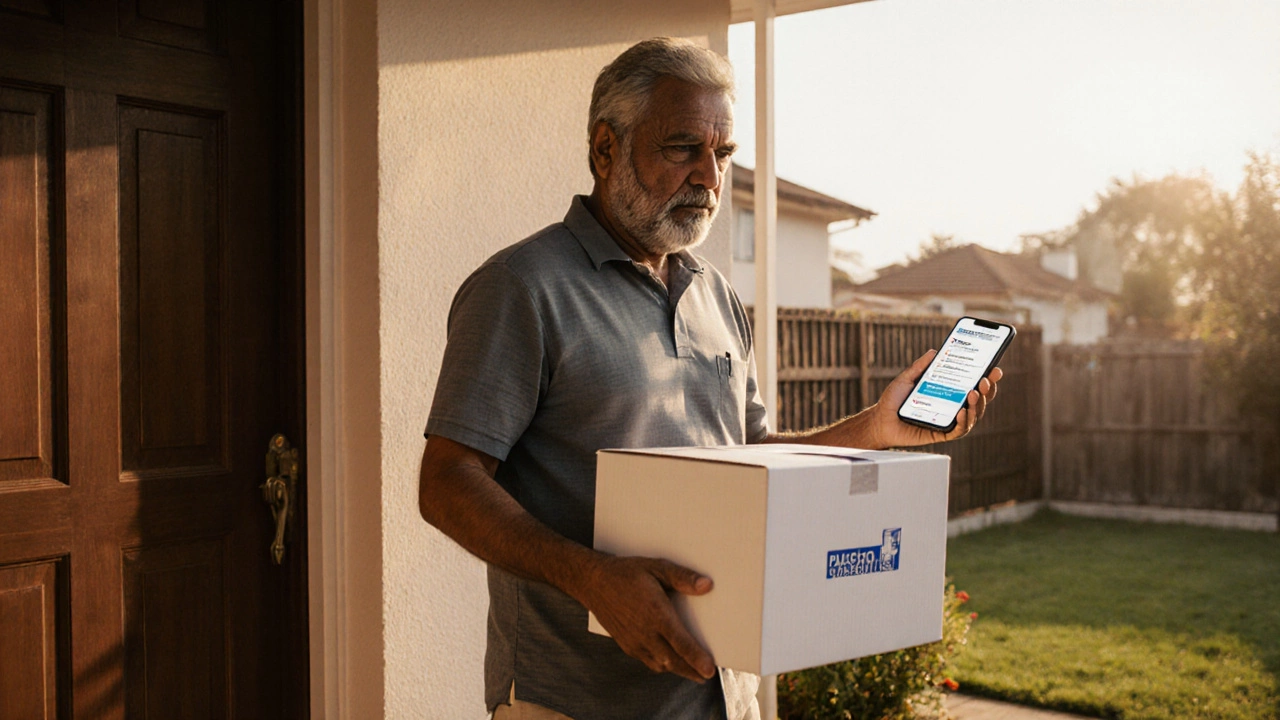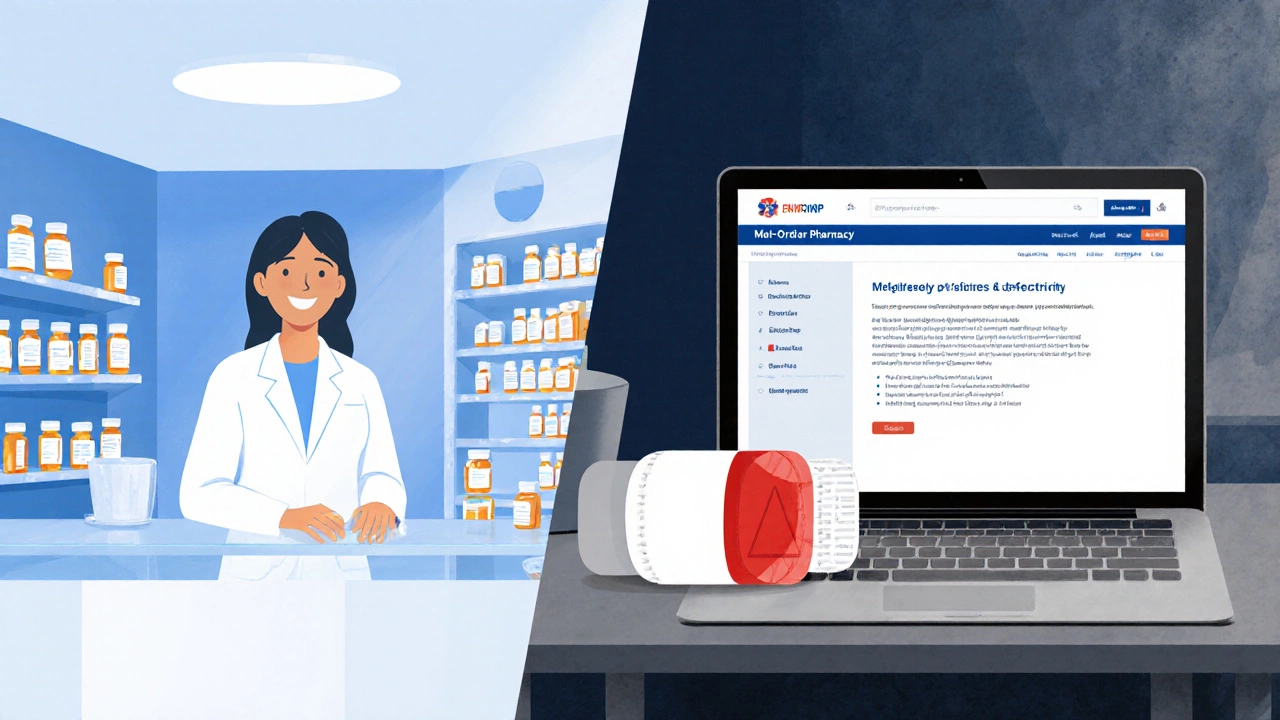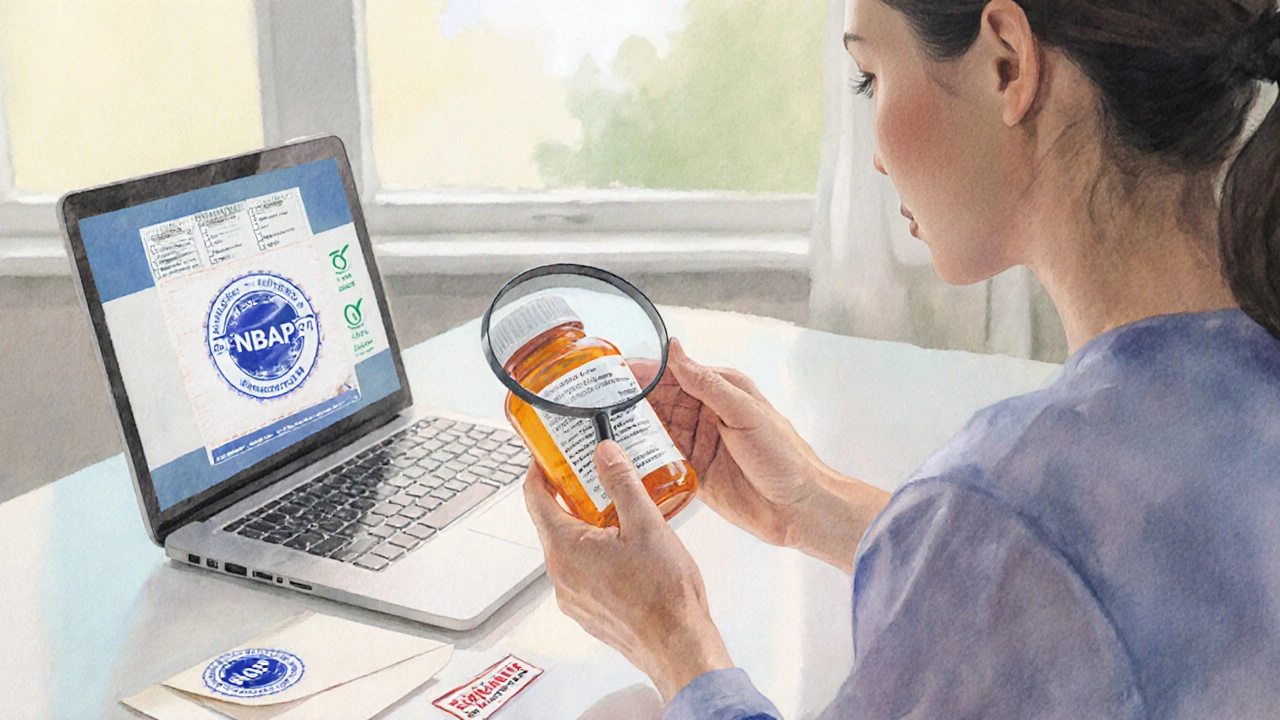
Mail-Order Pharmacy Verification Tool
Verify if a mail-order pharmacy is accredited by the National Association of Boards of Pharmacy (NABP) to minimize risks of counterfeit medications and ensure safe delivery.
When you hear “Mail-order pharmacy is a type of online pharmacy that delivers prescription medications directly to a patient’s home,” you probably think of convenience and lower costs. Those are real benefits, but they come with a flip side. In this article we’ll break down the main mail-order pharmacy disadvantage that people often overlook, and show you how to protect yourself.
What Exactly Is a Mail‑Order Pharmacy?
A Mail-order pharmacy is a specialty branch of the broader Online pharmacy ecosystem. Instead of walking into a brick‑and‑mortar store, you submit your prescription digitally, the pharmacy fills it, and a carrier ships the medication to your doorstep, often in 30‑day or 90‑day supplies.
Why People Choose Mail‑Order Pharmacies
- Lower out‑of‑pocket cost for many brand‑name drugs.
- Automatic refill reminders and sync with insurance billing.
- Convenient delivery, especially for people with limited mobility.
The Biggest Drawback: Lack of Face‑to‑Face Interaction
Unlike a local pharmacy, a mail‑order service rarely lets you speak directly with a pharmacist in person. That missing personal touch can lead to several concrete problems.

How the Missing Interaction Turns Into Real Risks
- Medication errors. When you can’t hand the prescription to a pharmacist, the chance of a data‑entry mistake rises. A study by the National Association of Boards of Pharmacy ( National Association of Boards of Pharmacy) found that 1 in 20 mail‑order fills had at least one discrepancy compared with in‑store fills.
- Inadequate counseling. Pharmacists can flag drug‑drug interactions, advise on proper administration, or suggest cheaper therapeutic alternatives. Without that face‑to‑face counseling, patients often miss crucial information.
- Delayed problem resolution. If a medication looks off, you can’t just ask the counter staff to double‑check. You have to call a call‑center, wait on hold, and possibly send the medication back-a process that can take days.
Other Not‑So‑Obvious Disadvantages
Beyond the interaction gap, several secondary issues make mail‑order a mixed bag.
- Shipping delays. Weather, customs, or carrier strikes can push delivery beyond the expected window, jeopardizing time‑sensitive therapies.
- Regulatory blind spots. In the United States, the FDA oversees manufacturing, but enforcement of online distributors varies country‑to‑country. Some mail‑order sites operate in gray‑area jurisdictions, increasing the risk of non‑compliant products.
- Counterfeit or substandard drugs. A 2023 audit by the International Pharmaceutical Federation reported that 3% of mailed prescriptions from unverified sources contained counterfeit ingredients. The risk rises when you order from a pharmacy that isn’t accredited by the National Association of Boards of Pharmacy or its foreign equivalents.
- Insurance complications. Some Insurance plans prefer retail fills because they can verify the claim at the point of sale. Mail‑order fills sometimes trigger additional paperwork or partial reimbursements.
- Privacy concerns. Shipping labels expose medication names, and package theft is a real threat. Moreover, data breaches at online pharmacy databases have exposed millions of patients’ Patient privacy information.
Comparison: Mail‑Order vs. Local Pharmacy
| Aspect | Mail‑Order Pharmacy | Local (Retail) Pharmacy |
|---|---|---|
| Delivery Time | 2‑7 business days (subject to carrier) | Immediate pickup |
| Personal Interaction | Phone or chat only | Face‑to‑face counseling |
| Cost | Often lower for bulk fills | Higher per‑script price |
| Insurance Acceptance | Varies; may need prior authorization | Usually seamless via pharmacy benefit manager |
| Risk of Counterfeit | Higher if not accredited | Very low (regulated inventory) |

How to Mitigate the Disadvantage
If you still want the convenience of mail‑order, follow this checklist to protect yourself.
- Verify accreditation. Look for a National Association of Boards of Pharmacy seal or a government‑issued pharmacy licence.
- Double‑check the medication label when it arrives. Compare dosage, imprint, and expiration date with your prescription.
- Keep a copy of the original electronic prescription and the pharmacy’s confirmation email. It helps resolve disputes quickly.
- Use a secure delivery option that requires a signature, reducing theft risk.
- Ask your insurer whether they prefer a retail fill for a particular drug. Some plans offer higher co‑pay for mail‑order, negating the cost advantage.
- Set up a reminder to review the medication with your primary care provider within two weeks of receipt.
When to Stick with a Local Pharmacy
Not every drug needs the mail‑order route. Consider a local pharmacy when:
- The medication requires temperature‑controlled handling (e.g., insulin).
- You’re starting a new therapy that needs close monitoring.
- You have a complex medication regimen and need frequent counseling.
Bottom Line
The primary mail-order pharmacy disadvantage is the loss of immediate, personal pharmacist interaction, which can translate into medication errors, delayed problem resolution, and higher exposure to counterfeit drugs. By choosing accredited providers, staying vigilant about deliveries, and knowing when a local pharmacy is safer, you can reap the cost savings while keeping your health risks to a minimum.
Is mail‑order pharmacy safe for chronic medications?
It can be safe if you use a pharmacy that is licensed, accredited by the National Association of Boards of Pharmacy, and offers verified shipping. Always compare the medication’s imprint and expiration date with your prescription, and keep a copy of the original order.
What should I do if my mailed prescription arrives damaged?
Contact the pharmacy’s customer service immediately, document the damage with photos, and request a replacement. Most reputable services will ship a new batch at no extra charge, especially if you have a signature‑required delivery.
Can my health insurance reject a mail‑order fill?
Yes. Some plans only cover retail fills or require prior authorization for mail‑order. Check your insurer’s pharmacy benefit manager guidelines before ordering.
How can I verify a mail‑order pharmacy’s legitimacy?
Look for a licensing number, the NBAP accreditation seal, and reviews from the Better Business Bureau. A legitimate pharmacy will also require a valid prescription and never ask for cash payment without a prescription.
Are there any drugs that should never be ordered by mail?
Controlled substances, biologics that need refrigeration, and medications that require immediate blood‑level monitoring (like certain anticoagulants) are best filled in‑person.








